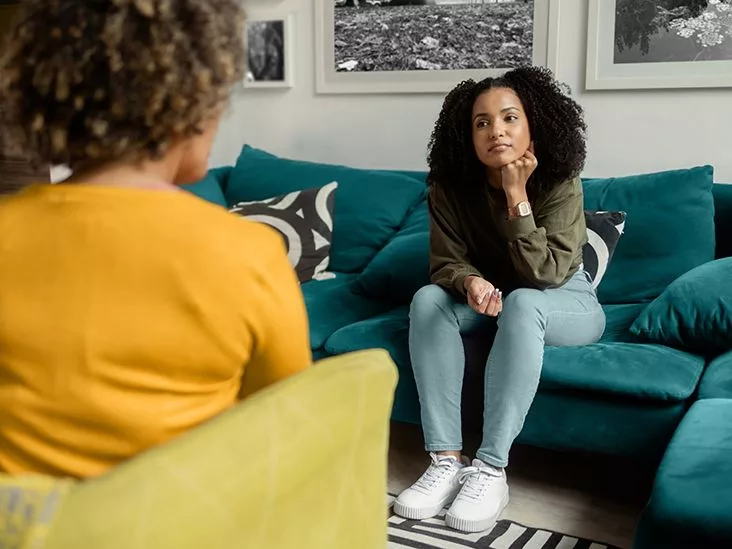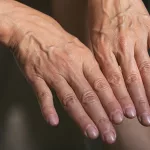Looking for the right terapia trastornos alimentarios can feel like searching for a lifeline in a storm. You’ve probably asked yourself, “Will this really help?” or “Which approach matches my situation?” The good news is that you’re not alone – and there are evidence‑based paths that many people have walked successfully. Below, I’ll walk you through the most common therapies, when they shine, what to watch out for, and how to build a supportive team around you. Think of this as a friendly chat over coffee, with a dash of science and a pinch of personal stories to keep things real.
Why therapy matters
First off, why does any therapy matter for eating disorders? At its core, an eating disorder is a coping mechanism – a way the mind tries to control something when other parts feel chaotic. According to the Mayo Clinic, effective therapy helps break that coping loop, replaces harmful habits with healthier ones, and restores the body‑mind balance that may have been lost. It’s not a quick fix, but a structured journey that can lead to lasting change.
Therapy types overview
There isn’t a one‑size‑fits‑all recipe. Different disorders respond best to different modalities, and many programs blend several approaches. Below is a quick snapshot of the major therapies you’ll encounter.
| Therapy | Best for | Typical Length | Evidence Base |
|---|---|---|---|
| Therapy Cognitivo‑Conductual (CBT‑E) | Bulimia, Binge‑Eating, some Anorexia | 20‑40 sessions | Strong – Mayo Clinic, numerous RCTs |
| Family‑Based Treatment (FT) | Adolescent Anorexia, some Bulimia | 6‑12 months | Strong – especially for teens |
| Terapia Dialéctica Conductual (DBT) | Binge‑Eating with emotional dysregulation | 12‑24 months | Moderate – growing research |
| Exposición‑Respuesta Preventiva (ERP) | Bulimia, Compulsive Eating | 10‑15 sessions | Moderate – emerging data |
Notice how each approach aligns with a specific pattern of thoughts, emotions, or behaviors. The next sections dive deeper into the three most common disorders.
Anorexia: family focus
How Family‑Based Treatment works
When a teenager is battling anorexia, the whole family becomes part of the solution. Family‑Based Treatment (often called “the Maudsley approach”) puts parents in the driver’s seat for meal planning, weight monitoring, and creating a safe eating environment. It’s not about blame – it’s about collaboration.
Step‑by‑step example
- Initial assessment: A medical doctor checks vital signs, labs, and weight; a therapist evaluates thoughts about body image.
- Weekly family meetings: The therapist guides parents on how to structure meals, respond to food refusals, and stay calm.
- Weight restoration phase: Gradual weight gain is tracked; families receive feedback and adjust strategies.
- Transition to independence: As weight stabilizes, the teen takes back more responsibility for eating while the family steps back.
Risk to watch: Some families feel overwhelmed or resistant. If parental conflict spikes, the therapist will address it directly, often bringing in a family counselor.
Real‑world story
Maria was 15 when her parents noticed she’d dropped from a healthy 55 kg to 42 kg. After a brief stint in inpatient care, she entered a FT program in Alicante. Within eight months, she was back to 52 kg, and more importantly, she reported feeling “normal” around food again. Her family says the weekly check‑ins were the “lifeline” that kept everyone aligned.
Bulimia: CBT‑E guide
What makes CBT‑E special?
Cognitive‑Behavioral Therapy – Enhanced (CBT‑E) is the gold standard for bulimia. It focuses on three pillars: (1) recording every binge‑purge episode, (2) challenging distorted thoughts about shape and weight, and (3) practicing healthier coping skills. The “enhanced” part adds modules for perfectionism, low self‑esteem, and mood management, making it a well‑rounded package.
Typical 20‑session roadmap
| Phase | Goal | Key Tool |
|---|---|---|
| 1‑4 | Normalize eating patterns | Food diary + regular meals |
| 5‑8 | Break purge cycle | Exposure to feared foods |
| 9‑12 | Reframe body thoughts | Cognitive restructuring |
| 13‑20 | Prevent relapse | Relapse‑prevention plan |
Benefits: Studies show a 70 % reduction in binge‑purge episodes after completing CBT‑E. A Mayo Clinic review notes that CBT‑E also improves mood and self‑esteem.
Possible downsides: The first few weeks can feel intense as you confront cravings and uncomfortable thoughts. If anxiety spikes, the therapist can incorporate relaxation techniques or brief DBT skills to keep you grounded.
Binge‑Eating approaches
CBT‑E vs. DBT: which fits?
If you find yourself stuck in cycles of uncontrolled eating, both CBT‑E and Dialectical Behavior Therapy (DBT) have shown promise. CBT‑E targets the eating pattern directly: you learn to identify triggers, plan balanced meals, and replace binge episodes with structured eating. DBT digs deeper into emotional regulation, teaching mindfulness, distress tolerance, and interpersonal effectiveness – useful when bingeing is a way to escape overwhelming feelings.
Quick comparison
- CBT‑E: 12‑16 sessions, focus on food‑related cognitions, strong evidence for binge‑eating disorder.
- DBT: 24‑32 sessions, broad emotional‑skill set, ideal when comorbid issues like self‑harm or borderline traits exist.
Many clinicians blend them: start with CBT‑E to gain control over eating, then add DBT modules to shore up emotional resilience.
A personal anecdote
When I was 27, I struggled with nightly binge episodes that left me feeling ashamed. My therapist introduced a hybrid plan: we began with CBT‑E worksheets to track foods, then switched to weekly DBT “mindful eating” exercises. Within three months, my binge frequency dropped from daily to once a week, and I finally felt equipped to handle stress without reaching for the pantry.
Multidisciplinary team
Who should be on your squad?
Think of recovery as a band – each musician brings a unique sound, and together they create harmony.
- Psychologist / therapist – the conductor, specialized in eating‑disorder care.
- Psychiatrist – adds medication when anxiety, depression, or obsessive traits interfere.
- Registered dietitian – designs nutrition plans that feel realistic, not punitive.
- Medical doctor – monitors heart rate, electrolytes, and overall physical health.
- Family members / caregivers – provide daily encouragement and help sustain meal routines.
Choosing the right professional
Ask these quick questions during your first call:
- Do you have specific training in eating‑disorder treatment?
- How many years have you worked with terapia trastornos alimentarios?
- Do you use evidence‑based protocols like CBT‑E or FT?
- Can you collaborate with a dietitian and medical doctor?
A 2009 Spanish clinical practice guide emphasizes the importance of certified expertise and coordinated care – a reminder that quality matters as much as accessibility.
Benefits and risks
What you can expect to gain
When therapy clicks, the positive ripple effects are profound:
- Steady restoration of a healthy weight.
- Reduced frequency of binge, purge, or restriction episodes.
- Improved mood, self‑esteem, and social connections.
- Long‑term skills for stress management that outlive the treatment period.
Potential pitfalls
No treatment is without challenges. Some common concerns include:
- Temporary anxiety: Facing feared foods can spike nerves at first.
- Emotional discomfort: Uncovering deep‑seated beliefs about body image may feel unsettling.
- Medication side‑effects: If a psychiatrist prescribes SSRIs, monitor for sleep changes or appetite shifts.
- Relapse risk: Even after progress, life stressors can trigger old patterns – that’s why a relapse‑prevention plan is crucial.
Being honest with your team about any side‑effects or setbacks ensures you can adjust the plan quickly, keeping you on track.
Take the next step
Now that you’ve got the lay of the land, it’s time to act. The first move could be as simple as calling a local therapist and asking about their experience with terapia anorexia or terapia bulimia. If you’re a teen or a parent, consider a Family‑Based Treatment program – many Spanish centers, such as those in Alicante, offer specialized outpatient services that blend medical, nutritional, and psychological care.
Remember, seeking help isn’t a sign of weakness; it’s a courageous declaration that you deserve a healthier relationship with food and your body. If you’re feeling hesitant, try writing down three reasons why you want to start therapy and keep them on your nightstand – a daily reminder of your motivation.
What’s your story? Have you tried any of these approaches, or are you just beginning to explore? Share your thoughts in the comments, or reach out if you have questions. Together, we can navigate the path toward recovery, one supportive step at a time.


















Leave a Reply
You must be logged in to post a comment.